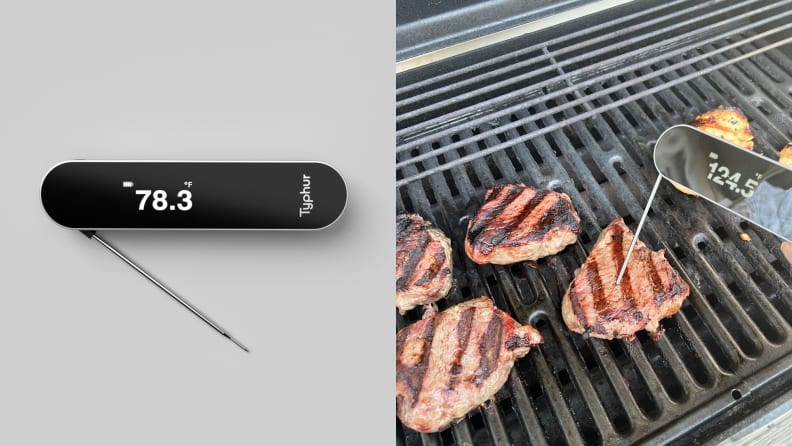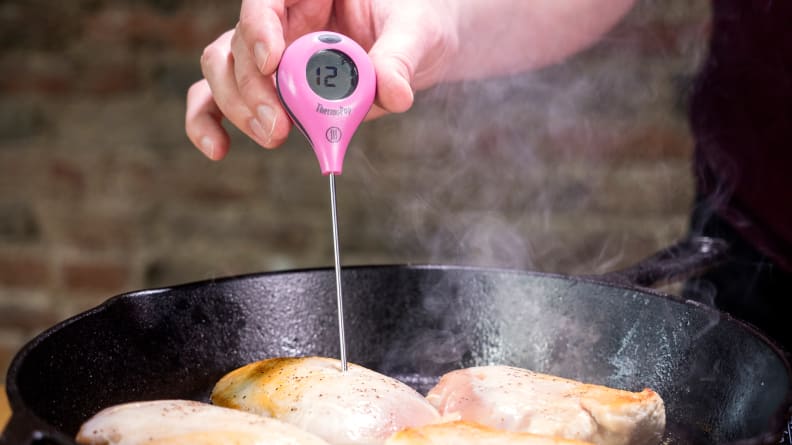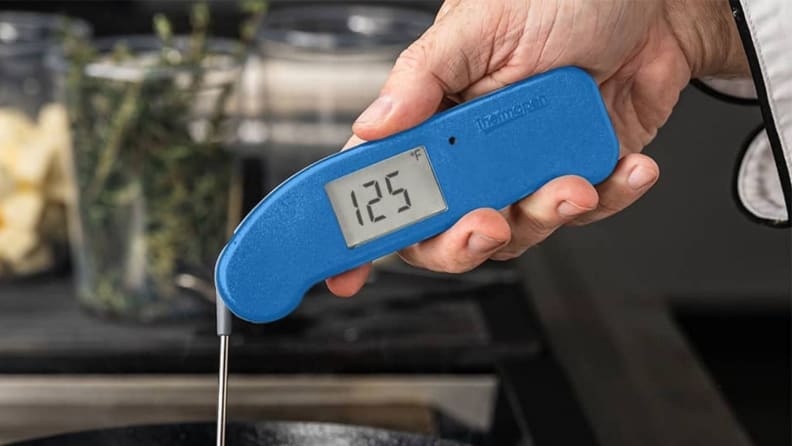The Best Digital Meat Thermometers of 2023
If you love to cook or grill, but hate the guesswork of figuring out when your meat is done, you should seriously consider getting a meat thermometer. It’s the only way to know —not guess—when your chicken is cooked to the correct internal temperature, or your steak is cooked just the way you like it.
Once you start using a meat thermometer, you’ll wonder why you didn’t rely on it sooner. We reach for an instant-read digital meat thermometer every time we cook poultry, smoke a brisket, grill a burger, or throw a roast in the oven. Those items will come out juicier and more flavorful if you cook them to a precise temperature!
Some of the best instant-read thermometers come at a more substantial price tag—like our best overall pick, the Typhur InstaProbe
(available at Amazon)
—and we were curious if those thermometers performed that much better than the less expensive versions like our best value, the ThermoWorks ThermoPop (available at ThermoWorks). So, we put these necessary kitchen accessories through a series of tests to see how successful they were at temping meats, making candy, and measuring fryer oil. After putting them through the wringer, we came out with some solid favorites.

Credit:
Typhur / Reviewed / Danielle DeSiato

The Typhur meat thermometer is our pick for the best overall.

Credit:
Reviewed / Jackson Ruckar

For accurate readings, submerge at least a half-inch of the probe into the thickest part of the meat.

Credit:
ThermoWorks

The ThermoWorks Thermapen ONE is our pick for most durable.
Other Digital Meat Thermometers We Tested
How We Tested Digital Meat Thermometers
The Tester
Hi, I’m Lindsay Mattison, a trained professional chef. Throughout my career, I’ve found that precision and speed are critical in a fast-paced restaurant environment, but they’re no less important at home. This is especially true when it comes to a digital instant-read meat thermometer. It can really make a difference if you want to cook up the best cuts of meat, candy, or fried foods. Since I’m pretty picky when it comes to my personal thermometer, I wanted to help you pick the perfect one!
The Tests
We chose 9 products to test—eight foldaway models and one long-probe model—and put them through a variety of tests designed to assess accuracy, speed, and overall feel.
We started with accuracy because a thermometer’s main function is to display the correct temperature. A cup of ice water should read 32 degrees Fahrenheit and a pot of boiling water should register 212 degrees Fahrenheit at sea level. We also measured 350-degree Fahrenheit fryer oil to see if the thermometer had a versatile enough temperature range to make candy. To make sure they were able to take consistent temperatures, we repeated each test three times and averaged the results.
While speed might not seem like an important factor for a thermometer, just consider this: when you’re throwing a Thanksgiving dinner and trying to coordinate a million side dishes (and the personalities of all your guests, too), hovering your hand over the turkey for an extra 10 seconds can feel like an eternity. Some of the products only took two or three seconds to determine final temperatures, while others lagged behind at 15 to 20 seconds!
Finally, we looked at the device’s overall feel. We cooked up some chicken thighs to assess the length and width of the probes. We also wanted to know if it was awkward to view the display or if it was comfortable to hold as we took the temperature of hot food.
How to Use a Meat Thermometer
There are several different types of cooking and kitchen thermometers. You’ll want to use an oven thermometer, which you leave inside the oven door at all times, to ensure the cooking environment is accurate.
Then there are probe thermometers, digital thermometers designed to monitor real-time internal temperatures. They’re inserted into the thickest part of meat like whole chicken or a roast while it’s still raw, allowing you to pinpoint the exact moment your food reaches its ideal temperature.
Meat thermometers, on the other hand, are used are only necessary when you’re ready to check the food’s temperature. We love the digital models because they’re quicker and easier to read than analog thermometers. The keys to your cooking success will be having the right tool that’s accurate (usually to a tenth of a degree), easy to read, has a long battery life, and is simple to store while not in use.
To properly use a meat thermometer follow these five steps:
-
Know which temperature you’re aiming for. For food safety reasons, it’s recommended that red meat, pork and fish, be at 145℉; while poultry such as chicken and turkey start at 165℉.
-
Measure the thickest part of the food item.
-
Submerge the entire tip of the probe. It should be easy to determine the tip part of the thermometer, but if not, make sure at least a half-inch of the metal probe is submerged.
-
Measure multiple times. Check the temperature of the meat a minute or so before it should be done to see if you need to let it cooking longer than the recipe calls for. Then keep measuring every few minutes until it’s reached the desired temperature. At that point, you can pull the item out of the oven, or off the grill.
-
Clean after each use. To ensure your thermometer remains safe to use again and remains accurate, clean after each use with hot water or wipe with a hot cloth.
More Articles You Might Enjoy
For all the latest Lifestyle News Click Here
For the latest news and updates, follow us on Google News.



